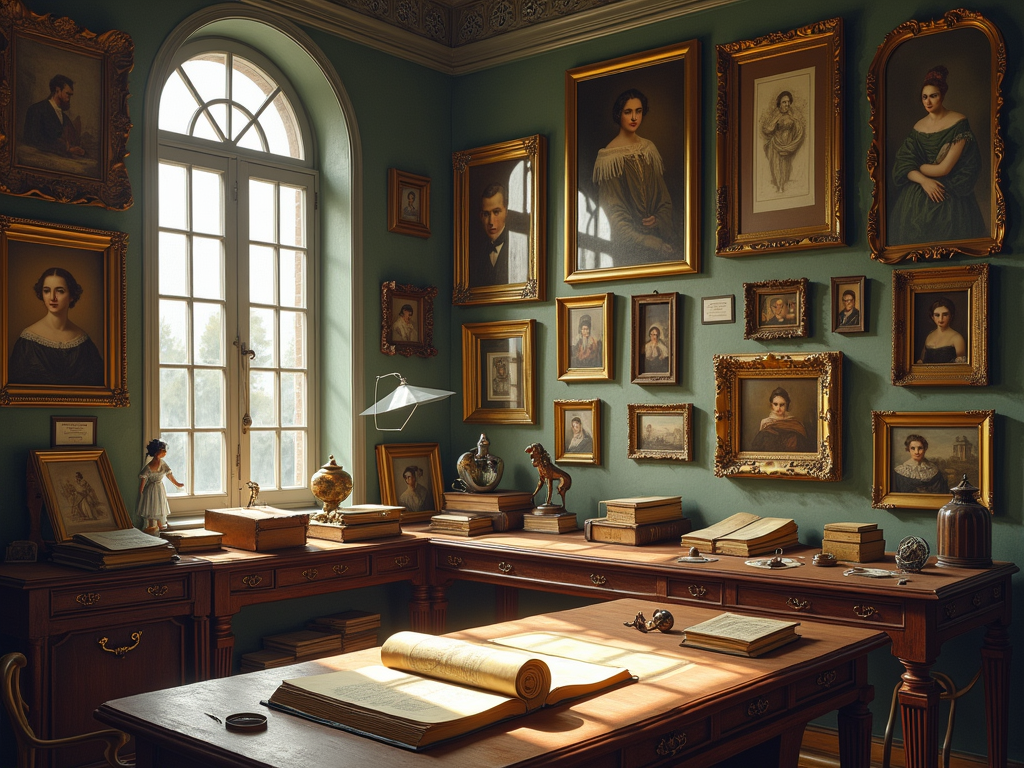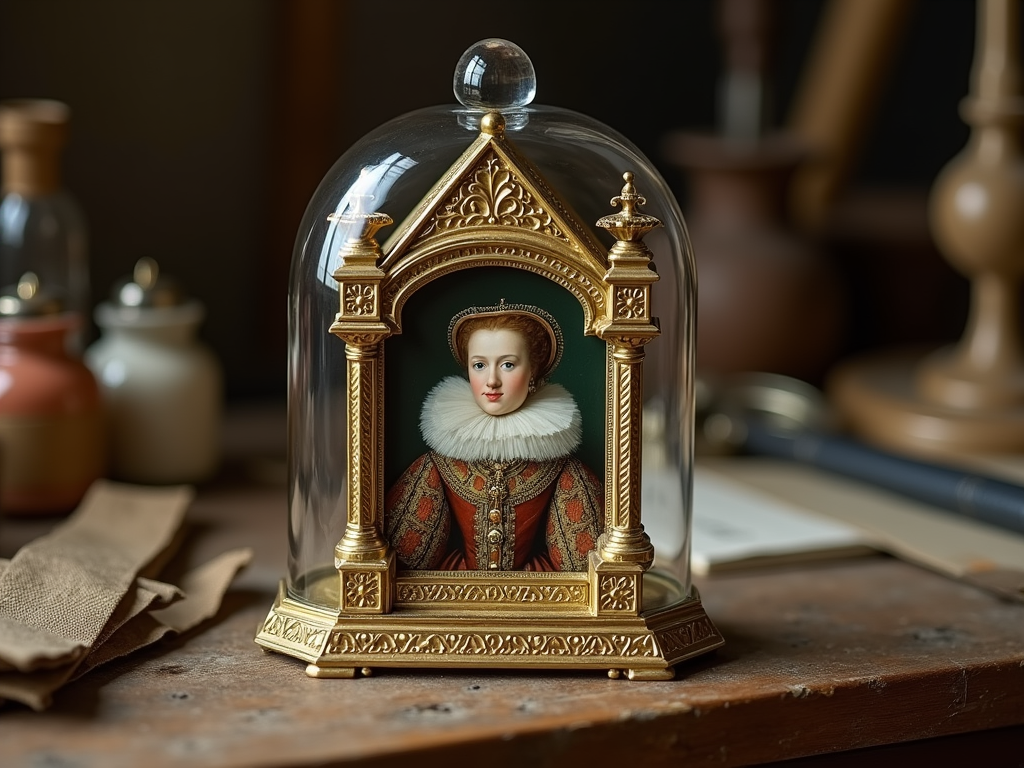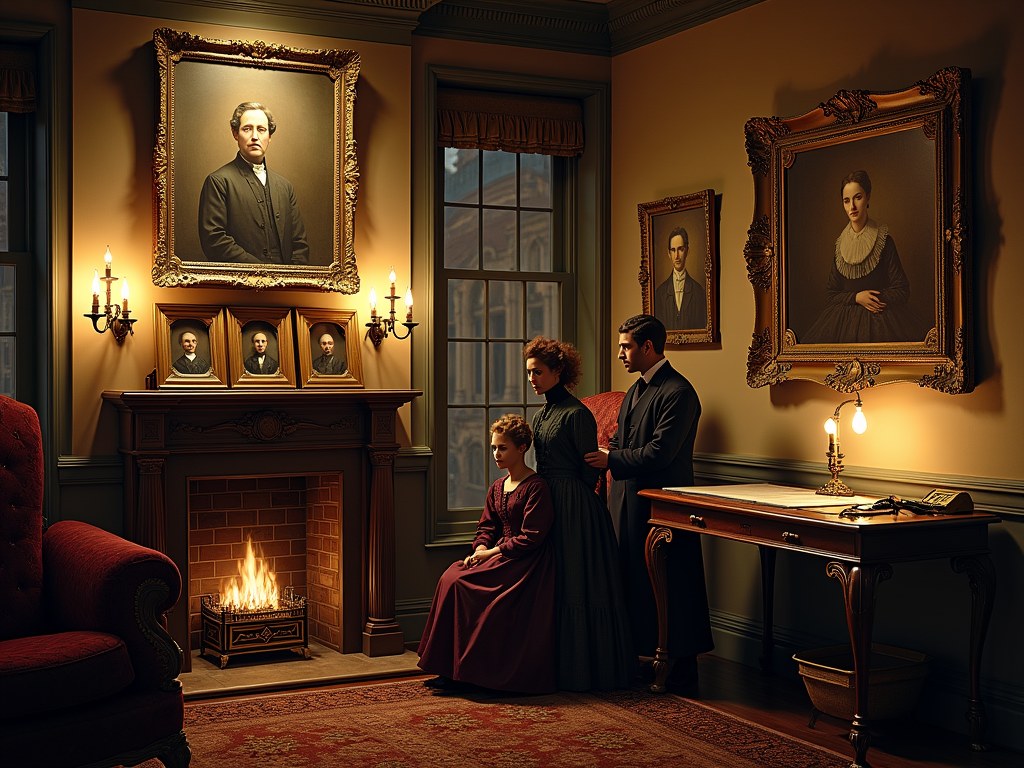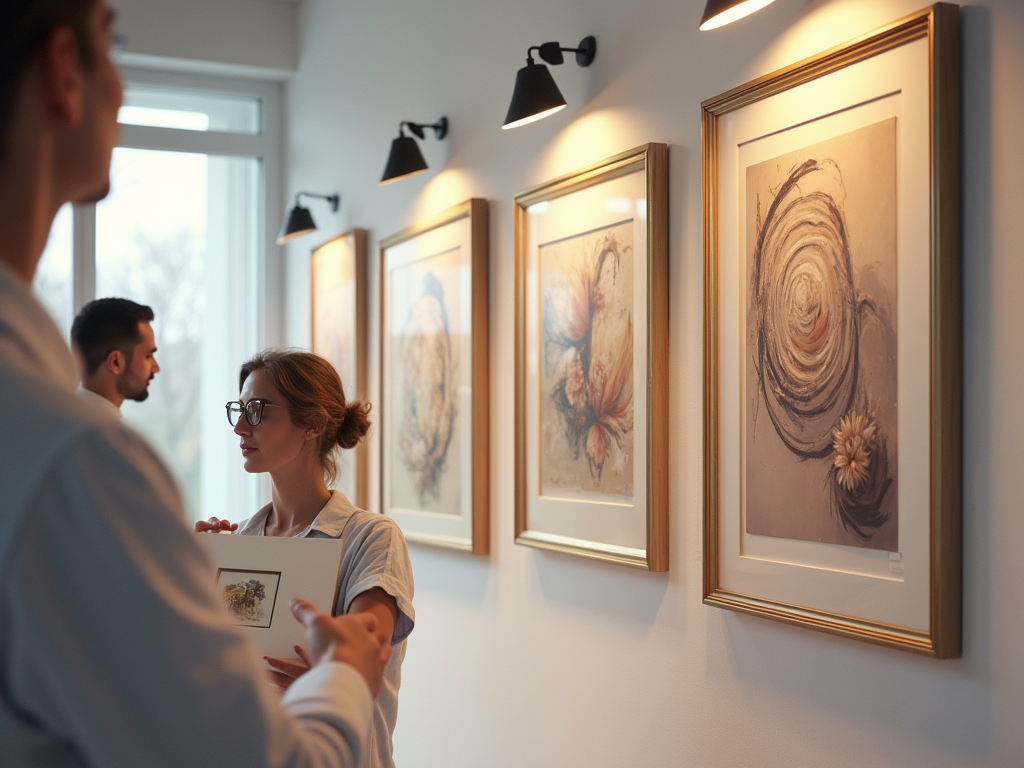
The History of Glass in Picture Frames
Glass in picture frames originally served as a safeguard for sacred relics in medieval churches. Due to its scarcity and high cost, only the wealthy could afford it. By the 1500s, miniature portraits helped push glass frame protection into mainstream art preservation.
Key Takeaways
- Religious institutions pioneered the use of glass in frames to protect sacred relics and important documents.
- Early glass was imperfect and limited to small sizes, restricting frame dimensions until manufacturing advancements improved production.
- The late 17th century saw the French innovation of plate glass production, revolutionizing art display by enabling larger protective coverings.
- The Victorian era and the rise of photography made glass-fronted frames more accessible to the middle class.
- Modern specialized glass options include UV-protective, anti-reflective, and museum-quality varieties for enhanced artwork preservation.
The Evolution of Glass Picture Frames: From Luxury to Standard
Glass in picture frames started as a practical solution for protecting valuable religious artifacts and precious documents. In the medieval period, glass was a rare luxury item, making early picture frame history closely tied to wealth and religious significance.
From Sacred Protection to Artistic Innovation
The practice of using glass to protect artwork gained momentum during the late medieval period, but its roots stretch back to the early church’s need to safeguard sacred relics. I’ve found that these early glass coverings were far from the crystal-clear panes we use today – they contained bubbles, ripples, and other imperfections that made them less than ideal for displaying art.
The transformation of glass from a rare commodity to an essential framing component shaped picture framing traditions in several key ways:
- Religious institutions led the way, using glass-covered reliquaries to display sacred objects while keeping them safe from damage and theft.
- Small pieces of glass were initially all that could be produced, limiting frame sizes.
- Wealthy patrons commissioned special glass-covered frames to protect their prized paintings and documents.
- Glass production techniques steadily improved, though remained costly through the medieval period.
By the 14th and 15th centuries, glass-making had become more sophisticated, but the material remained expensive enough that only churches, nobles, and wealthy merchants could afford frames with glass protection. This exclusivity meant that antique picture frames with original glass are particularly valuable, offering a glimpse into the craftsmanship of past centuries.
The high cost of early glass production meant that many frames went without any protective covering, or used alternatives like thin sheets of horn or mica. These materials provided some protection while being more affordable than glass, though they didn’t offer the same clarity or durability.
Miniature Portraits Lead the Way: The First Glass-Protected Art
Early Protection Methods for Delicate Art
The story of glass in picture frames starts with miniature portrait development in the 1500s. These small, precious artworks needed special protection due to their delicate nature. I’ve found that the practice of using glass covers began as artists created increasingly intricate portraits on materials like vellum, ivory, and card.
During the Elizabethan era, these tiny masterpieces became a status symbol, leading to innovations in how they were displayed and protected. The solution? Small protective frames fitted with glass or mica covers. This marked the first time glass was specifically used to shield artwork from damage.
Locket-style frames soon emerged, serving both practical and aesthetic purposes. These early frames offered several key benefits:
- Protected delicate portrait materials from physical damage
- Prevented moisture and environmental factors from affecting the artwork
- Added a luxurious finish that enhanced the viewing experience
- Created an airtight seal that preserved colors and prevented fading
- Allowed for safe handling and transport of precious family heirlooms
As miniature portraits gained popularity, frame makers started experimenting with different glass types and mounting techniques. These early frame designs laid the groundwork for modern picture framing methods, showing that proper artwork protection has been a priority for centuries.
The practice of using glass in frames grew steadily from these humble beginnings with miniature portraits. This innovation changed how art was preserved and displayed, setting standards that continue to influence picture framing today.

The Glass Revolution: From Small to Large Scale
The 17th century marked a significant turning point in picture frame evolution with glass protection. Glass production advancements revolutionized how artwork could be displayed and preserved for generations to come.
Innovations in Glass Manufacturing
I’ve found that the late 17th century French innovation of plate glass production created exciting new possibilities for art display. This breakthrough meant that larger paintings could finally receive proper protection. Before this advancement, early picture frames rarely included glass due to size limitations and production constraints.
Glass served multiple vital protective functions for cherished artwork. Here’s what made it such a game-changing addition:
- Prevented dust accumulation on painting surfaces
- Protected against smoke damage from candles and fireplaces
- Created a barrier against destructive insects
- Reduced exposure to environmental elements
While glass remained a luxury item through the 18th century, its growing availability transformed the art world. More collectors could now protect their investments, and antique frames from this period often showcase the early integration of glass elements. This period also saw craftsmen developing new framing techniques to accommodate the weight and dimensions of glass panels.
The shift to glass-fronted frames changed how people interacted with artwork. I’ve noticed that frames from this era started incorporating deeper rabbet depths to accommodate both the artwork and protective glazing. This structural adaptation became a standard feature in frame design, influencing how we still construct picture frames today.
Photography Changes Everything: The Victorian Era Breakthrough
The Industrial Revolution sparked major changes in how people protected their cherished images. Picture framing saw dramatic developments during the Victorian era, with glass becoming a game-changing addition to the craft.
The Perfect Storm of Innovation
Mass production techniques developed during the Industrial Revolution made glass manufacturing faster and more efficient than ever before. While picture frames had existed for centuries, they rarely included glass protection until the 1800s. This changed dramatically in 1839 with Louis Daguerre’s groundbreaking invention of the daguerreotype – the first commercially successful photographic process.
These early photographs needed protection from air and moisture to prevent deterioration, making glass covers essential. The timing couldn’t have been better, as industrial glass production was reaching new heights of efficiency. The combination of photography’s rising popularity and decreased glass production costs created the perfect conditions for widespread adoption.
The middle class could finally afford both photographs and glass-fronted frames to protect them. This accessibility transformed picture framing from a luxury reserved for paintings and wealthy collectors into a common household feature. Here’s how glass in picture frames became standard:
- Mass production lowered glass prices by up to 40% between 1840-1860
- Photography studios began offering framed portraits with glass as a standard service
- The middle class started collecting family photographs, driving demand for protective frames
- Glass manufacturers developed specialized thin glass specifically for picture frames
- Frame makers incorporated glass into their standard designs
I’ve found that this period marked a lasting change in how we display and protect our images. The marriage of photography and affordable glass protection established practices that continue today. The techniques developed during this era laid the foundation for modern picture frame construction, where glass remains a crucial component for protecting both photographs and artwork.
This shift wasn’t just about protection – it transformed the entire viewing experience. Glass added depth and clarity to images while keeping them safe from dust, moisture, and handling. It’s fascinating to see how antique picture frames from this period often still have their original glass, proving just how effective this innovation was for preservation.
By the end of the Victorian era, glass had become so integrated into picture framing that it was strange to see a frame without it. This practice set the stage for modern framing standards, where glass remains an essential component in both DIY picture frames and professional framing solutions.

Modern Innovation: Specialized Glass Takes Center Stage
Glass has made remarkable strides since its early use in picture frames. I’ve seen incredible advances in glass technology that protect artwork while enhancing viewing experiences.
Advanced Protection Features
UV-protective glass stands as a game-changing innovation in frame construction. This specialized glass blocks up to 99% of harmful ultraviolet rays, preventing artwork from fading and deteriorating over time. Anti-reflective glass has revolutionized how we display art by virtually eliminating glare and reflections that can interfere with viewing. Museum glass represents the pinnacle of frame glass technology, combining UV protection, anti-reflective properties, and crystal-clear clarity in one premium product.
Alternative Solutions
While exploring different framing materials, I’ve found that acrylic alternatives offer unique benefits for specific situations. These modern options are:
- 50% lighter than traditional glass
- Shatter-resistant for safer handling
- Perfect for large-format artwork
- Ideal for high-traffic areas or children’s rooms
- Available with UV-protective coatings
Conservation framing has become standard practice in professional framing services. This approach uses acid-free materials and specialized glass to create a protective environment for valuable artwork. The combination of these modern materials with traditional framing techniques ensures that precious pieces remain protected for generations to come.
Each type of specialized glass serves specific purposes, from basic UV protection to museum-quality preservation. I recommend choosing the glass type based on the artwork’s value, display location, and your specific needs. For precious family photos or valuable art pieces, investing in higher-quality protective glass can make a significant difference in long-term preservation.

Sources:
Eli Wilner – A Short History of Framing
Metropolitan Museum of Art – Frames in the Robert Lehman Collection
Henry Heydenryk – The History of Framing
Alan Macfarlane and Gerry Martin – Glass: A World History
